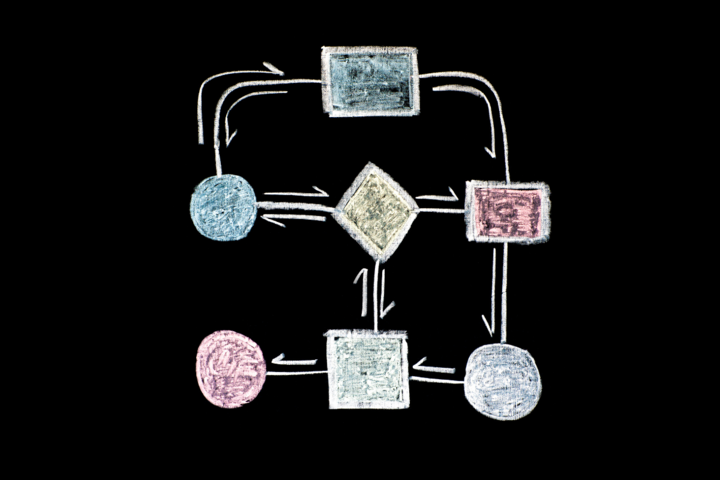Workflow automation is changing the way businesses, teams, and communities operate. With the right strategy, it saves time, reduces frustration, and improves efficiency. Done poorly, it can drain resources or even erode trust—two things no one can afford to lose.
At Stateshift, we believe automation should enhance human work, not replace it. It’s about letting people focus on their unique talents while technology handles repetitive, rules-based tasks that slow things down. The goal isn’t to turn people into overseers of machines. The goal is to create a thoughtful strategy where automation supports better work, stronger relationships, and smoother operations.
But how do you decide what to automate? And how do you make sure automation works for you without losing authenticity?
This guide walks through the best ways to implement workflow automation while keeping your work human, efficient, and impactful. It gives you a clear strategy for deciding what to automate, what to keep human-led, and how to scale without sacrificing trust.
These community strategy approaches are particularly valuable for building engaged developer communities. Authentic interaction must be balanced with efficient processes to scale engagement as part of a broader strategy.
Why Workflow Automation Matters
Businesses and communities are under constant pressure to do more with less. Simple, repetitive tasks like data entry, meeting follow-ups, and onboarding eat up time that could be spent on strategy, relationship-building, or creative problem-solving.
Automation removes these bottlenecks, making work faster and more reliable. But it’s not about automating everything. Some tasks should always stay human-led. The goal is to free up time for work that actually moves the needle, like connecting with people, fostering creativity, and making strategic decisions.
For companies building developer communities, automation enables teams to scale engagement without losing the personal touch developers value. Based on Stateshift’s work with 240+ companies, successful DevRel teams use automation as part of a larger community engagement strategy that frees up time for relationship-building.
The Golden Rule of Automation: Support Humans, Don’t Replace Them
Automation works best when it complements human strengths instead of trying to replace them. Machines excel at data processing, task repetition, and Automation works best when it complements human strengths instead of trying to replace them. Machines excel at data processing, repetition, and following rules. Humans excel at trust, empathy, and innovation.
Examples:
- Automating social replies might seem efficient, but it risks sounding robotic.
- Auto-generated onboarding emails save time, but they shouldn’t replace personal check-ins.
Use automation to handle background work so you can focus on delivering real value. This is the foundation of any solid automation strategy.
The Stateshift Four-Step Framework for Smarter Automation
At Stateshift, we follow a four-step process to identify the best opportunities for automation and ensure they actually make an impact. This framework provides a simple strategy for deciding what to automate and what to keep human.
1. Identify Time-Draining Tasks
Start by figuring out which tasks consume time or cause frustration. Look for:
• repetitive work that never improves
• manual processes that create bottlenecks
• tasks that frequently introduce errors
This analysis becomes the foundation of your automation strategy.
Examples:
- Client onboarding once slowed Stateshift down. Tracking new clients across spreadsheets caused errors. Automation saved hours each week.
- Note-taking during meetings is rarely a good use of attention. Tools like Fathom record calls, summarize key points, and convert them into action items.
👉 Pro Tip: Make a list of tasks you repeat daily or weekly—these are your top automation candidates.
2. Prioritize High-Impact Automation
Not everything deserves to be automated. A strong automation strategy prioritizes tasks that deliver meaningful returns.
Ask:
• Does this task repeat often?
• How much time would automation save?
• Would automation reduce errors or improve user experience?
• Does this task require human judgment?
Frequent, rules-based tasks often yield the best ROI.
Example:
Onboarding one client may take only minutes. But onboarding 30 clients a month adds up to hours saved—time that can be invested into content creation, product planning, or community building.
💡 Pro Tip: Tasks that don’t require emotional intelligence or creativity are perfect for automation and perfect for a scalable workflow strategy.
For developer communities, this community strategy approach applies to onboarding new members, distributing content, and managing recurring events. Automation handles the operational work so humans can focus on relationships.

3. Start Small With a Minimum Viable Product (MVP)
A common mistake is thinking automation requires a huge, complex system. It doesn’t. A practical automation strategy starts small.
Low-code tools like Zapier let you automate simple workflows:
• sending welcome emails
• assigning clients to team members
• adding people to Slack
• generating custom tags
• updating CRM fields
By starting with a small automation MVP, you can test what works, measure impact, and refine your process.
For example, if your onboarding process involves:
- sending a welcome email
- assigning a client to the right team
- adding them to Slack
Zapier can do all three in one workflow.
Starting small reduces risk and helps you build a sustainable automation strategy over time.

4. Iterate and Optimize
AAutomation isn’t a one-time project—it’s an ongoing cycle. Your automation strategy improves as your team learns what works and what doesn’t.
Ask yourself:
• Is this actually saving time?
• What feedback do people have about the new workflow?
• Are there unexpected edge cases?
• Have business needs changed?
Small adjustments make automation more efficient and more relevant.
For example:
After automating client onboarding, you might realize that adding custom tags improves reporting. Or that adding a Slack notification helps your team deliver faster responses. These small tweaks strengthen your strategy and make automation more valuable.
Recommended Tools for Workflow Automation
If you’re beginning your automation strategy, here are tools that offer quick wins:
🔹 Zapier – A no-code automation platform that connects apps and creates workflows.
💡 Example: Automate email follow-ups, task assignments, or data entry.
🔹 Fathom – A video meeting assistant that takes notes, highlights key moments, and creates summaries.
💡 Example: Automatically export meeting notes to a project management tool for easy follow-ups.
Automation Should Support, Not Replace, Human Connection
At the heart of any strong automation strategy is a simple principle: humans build trust, machines support the process.
Automation should strengthen your relationships, not weaken them.
• Auto-sorting support tickets helps.
• Auto-replying to complex issues hurts.
• Auto-tagging discussions helps.
• Auto-moderating nuanced feedback hurts.
Use automation to streamline the path, not to replace the person walking it.
Real-World Examples of Workflow Automation in Action
🚀 Client Onboarding
A consulting firm used Zapier to automate onboarding, reducing manual work by 80%. Welcome emails, project folders, and assignments now happen instantly.
🎤 Note-Taking and Action Items
A marketing team uses Fathom to summarize meetings, freeing hours each week for content strategy.
📣 Community Content Distribution
A DevRel team automated sending new tutorials and updates to members, freeing time for deeper technical discussions.
Each example reinforces the core point: automation works best when it follows a clear strategy.
Common Automation Mistakes to Avoid
Even strong teams stumble without a strategy. Common mistakes include:
- Automating a broken process — fix it first.
- No documentation — one person knowing the system is not a strategy.
- Adding tools without a plan — tools solve problems only when tied to outcomes.
- Automating trust-building moments — some interactions must stay human.
Avoiding these mistakes keeps your automation strategy clean and sustainable.
How to Build a Sustainable Automation Culture
Automation becomes powerful when it’s part of the culture. Strong cultures:
- encourage shared ownership
- celebrate time savings
- teach the basics of the automation stack
- run quarterly audits to refine the strategy
Automation is most effective when everyone feels empowered to improve workflows.
When NOT to Automate
Not everything should be automated.
Avoid automating:
- tasks requiring empathy
- tasks requiring nuanced judgment
- tasks that build trust—like welcoming new community members
A thoughtful strategy includes clear boundaries around what must remain human.
How Automation Strengthens Community Strategy
In developer communities, automation becomes a multiplier:
- faster onboarding
- consistent communication
- better insight into community behavior
- more time for connection and collaboration
This balance is essential for any modern community strategy.
Workflow Automation Strategy Checklist
Use this list to guide your implementation:
- Have we identified our top manual tasks?
- Does automation support our broader strategy?
- Are we keeping human-led tasks human?
- Are our tools tied to clear outcomes?
- Do we have documentation?
- Are we measuring time saved?
- Are we optimizing regularly?
Checklists turn strategy into action.
The Future of Workflow Automation
Automation is evolving fast. The next wave will include:
- predictive workflows that anticipate bottlenecks
- adaptive personalization based on user behavior
- smarter integrations that remove tool silos
But one principle will always hold:
the best automation works because it’s supported by a clear strategy.
Teams that build strong foundations today will be prepared for what comes next.
Final Thoughts
Workflow automation isn’t about replacing people—it’s about building a smarter, more scalable strategy for how work gets done.
The strongest automation strategies let technology handle repetitive tasks while teams focus on authentic engagement, strategic relationship building, and creative problem-solving.
Stateshift helps companies design automation frameworks that support community engagement, improve operations, and strengthen developer trust—all without losing the human connection that makes communities thrive.





